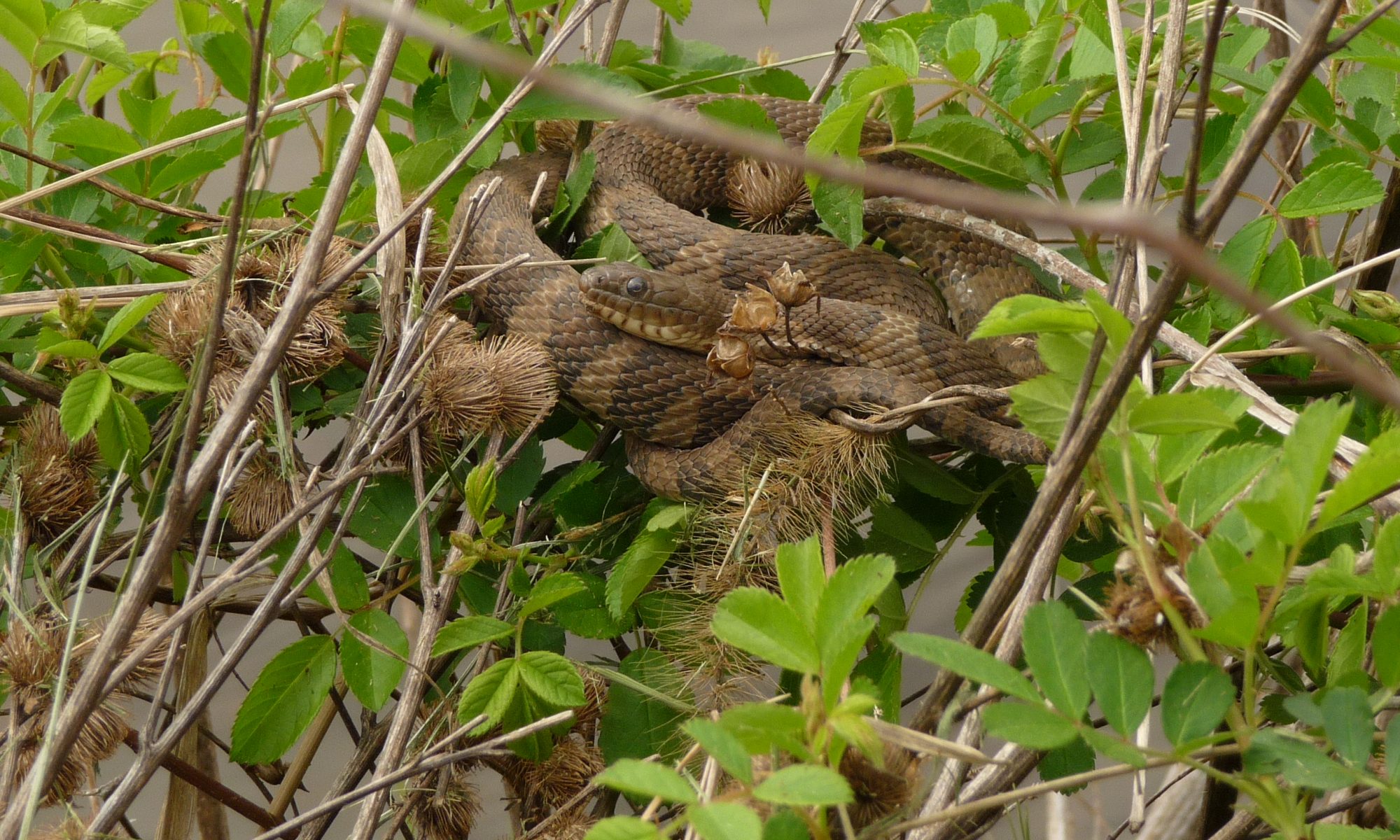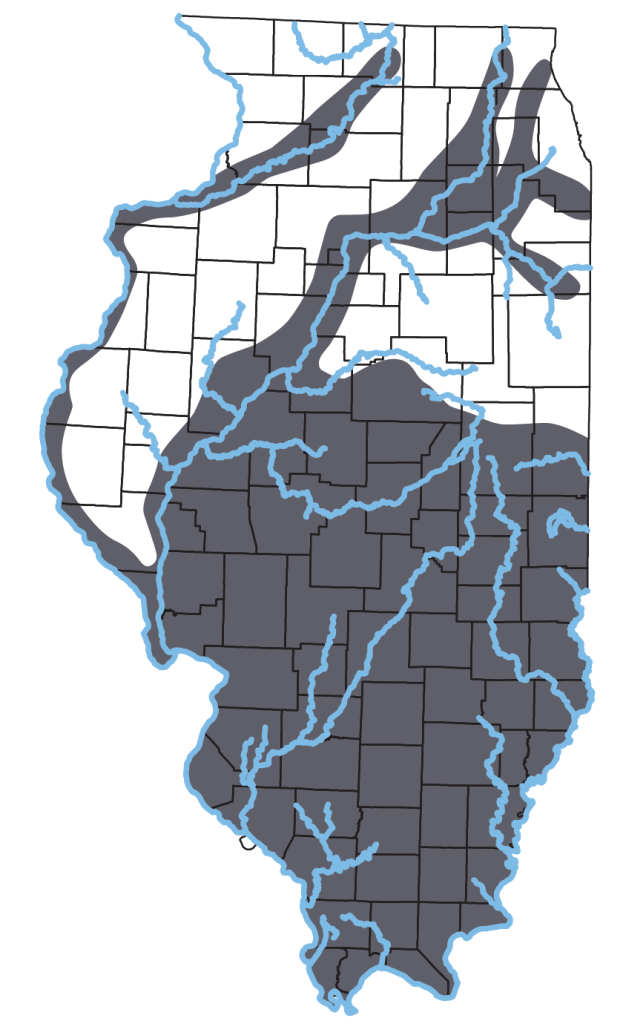Trachemys scripta (Schoepf, 1792)
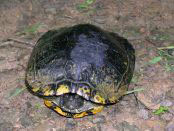
Key Characteristics: Bright red stripe behind eye; dark spot on each plastral scute.
Similar Species: River Cooter. See Key to Adult Turtles of Illinois for help with identification.
Subspecies: Three subspecies are currently recognized in the United States: Red-eared Slider, T. s. elegans (Wied-Neuwied, 1838); Yellow-bellied Slider, T. s. scripta; and Cumberland Slider, T. s. troosti (Holbrook, 1836). Only the Red-eared Slider is found in Illinois.
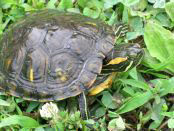
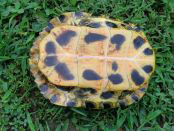
Description: Medium-sized (up to 26 cm CL) turtle with olive or green carapace. Vertical yellow bar through each lateral scute and additional yellow and dark lines parallel to each bar. Carapace low, with weak midback keel and serrate posterior edge. Keel and toothed edge of carapace disappear with age. Plastron yellow with dark markings. Old adults (particularly males) melanistic, with obscured pattern. Male with elongate foreclaws and vent opening beyond end of carapace.
Habitat: Most permanent bodies of water. Common in mud-bottomed sites rich in vegetation and basking structures.
Natural History: Omnivorous, feeds heavily on animal prey when young and becomes more herbivorous with maturation. Nests mid-May into early July. Female lays 5-18 ellipsoidal (ca. 36 x 22 mm) eggs per nest 2-3 times annually. Embryos hatch in two months.
Status: Adaptable and exceedingly common in Illinois.
Etymology: Trachemys – trachys (Greek) meaning rough; emys (Greek) for ‘freshwater tortoise’; scripta – scriptura (Latin) meaning ‘a writing’; elegans – (Latin) meaning ‘fine or elegant’.
Original Description: for elegans: Wied 1839. Reise in das innere Nord-America in den Jahren 1832 bis 1834: 213.
Type Specimen: Not designated for elegans.
Type Locality: Not stated for elegans, but listed as “Fox River bei New Harmony” [Posey Co., IN] by Weid (1865. Nova Acts Acad. Leopold.-Carol. 32:1-146)
Original Name: Emys elegans Weid, 1839
Nomenclatural History: The Red-eared Slider has been referred to in the Illinois literature as Chrysemys scripta elegans, Chrysemys elegans, Pseudemys troosti elegans, and Pseudemys elegans, among others.
